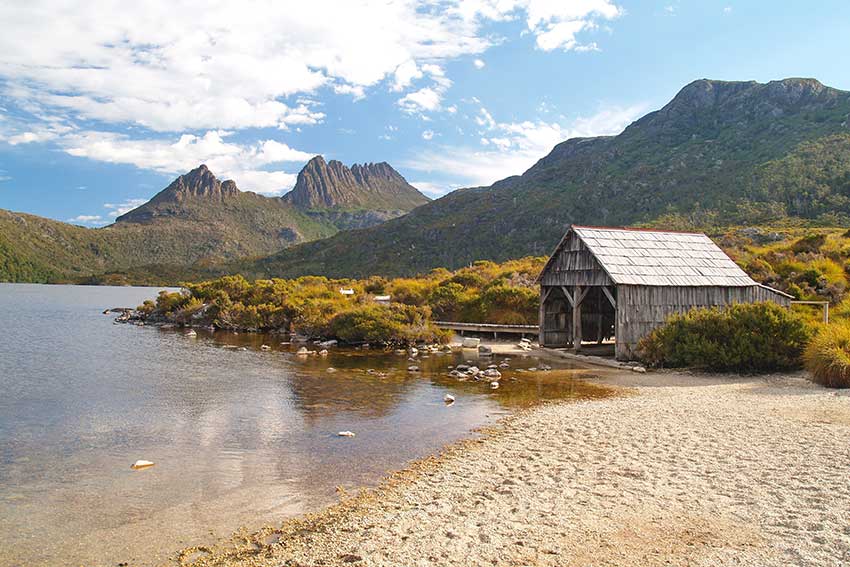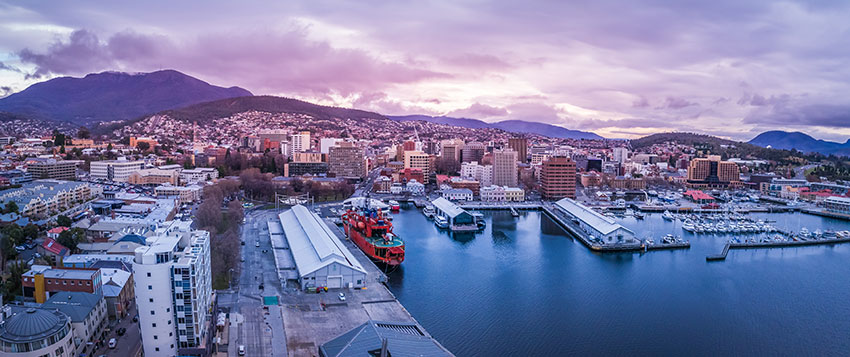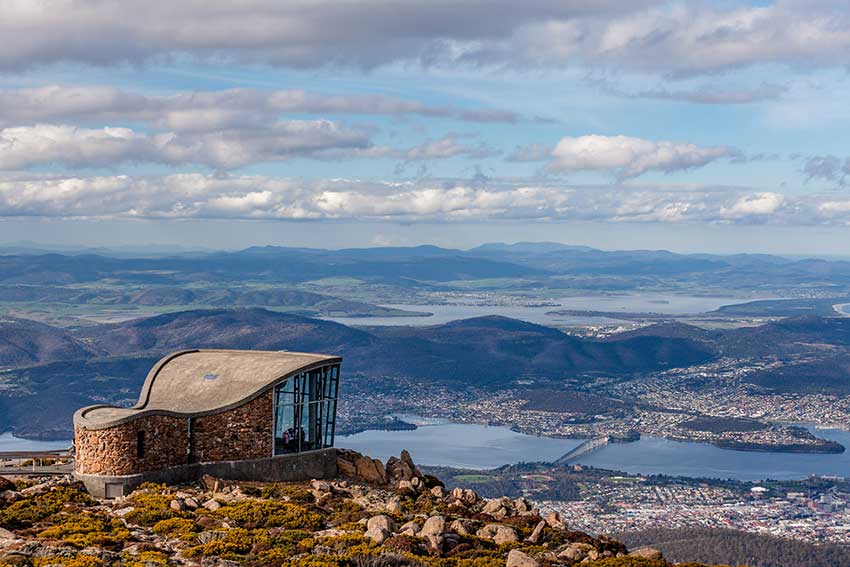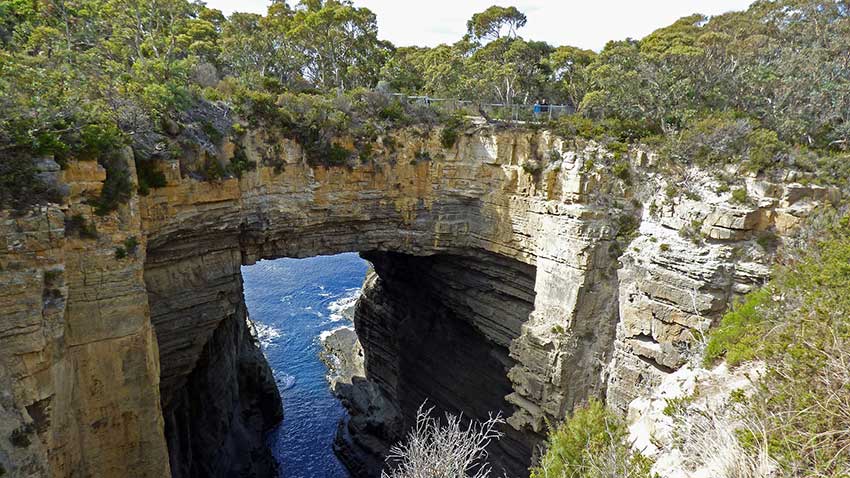Located some 300km south of the Australian mainland, Tasmania is a natural wonderland filled with world heritage sites and national parks, filled to the brim with crystal clear lakes, snow topped peaks, and truly bizarre and wonderous flora and fauna. Even beyond just its natural wonders, Tasmania has a number of attractions for pretty much any kind of traveller, from nature lovers, thrill seekers, and hiking enthusiasts to just passionate foodies and casual sightseers. Here are some of the best places to visit on your next visit to this wondrous little island paradise.
Cradle Mountain – Lake St. Clair National Park
Nestled in the northern section of the Tasmanian Wilderness World Heritage Area is the jewel in the crown of Tasmania’s many natural wonders – Cradle Mountain-Lake St. Clair National Park. A place of exceptional natural beauty, the park is home to everything from ancient rainforests and deep gorges to glacial lakes and snow-covered mountain peaks. It is also an area synonymous with nature, filled with rich vegetation and diverse wildlife. Don’t be surprised if you encounter Tasmanian devils, quolls, platypus, echidna, and more on your next visit there.

The park, as the name implies, is also home to Lake St. Clair and the iconic Cradle Mountain. The area surrounding the lake is a genuine hiker’s paradise, with everything from leisurely lakeside strolls and longer forest walks to treks to Cradle Mountain’s summit and the world-famous 80-kilometre Overland Track. The latter in particular is an unforgettable six-day hike that stretches from Cradle Mountain through to Lake St. Clair, with some truly breathtaking views along the way.
Hobart

The capital of Tasmania, Hobart is located on the banks of River Derwent, in the shadow of the soaring peak of Mount Wellington. This stunning and charming city has enough to keep you busy for days on end. Among its top attractions include the Tasmanian Museum and Art Gallery, which provides an insight into the state’s art and natural history. At the other end of the spectrum is the Museum of Old and New Art (MONA), with its mind-blowing interactive and immersive exhibits. The city is also home to a number of renowned cafes and restaurants, making it perfect for foodies. Located at the southern end of the city is the world-famous Salamanca Market, a place where you can find hundreds of stalls filled with traditional Tasmanian handmade and home grown produce; the perfect place to pick a souvenir.
Mount Wellington

Just to the west of Hobart is Wellington Park. Although not a national park, it is still protected as a reserve and is home to over 500 native plant species as well as a diverse range of fauna. Dominating the landscape at the park is the 1,270-metre-high Mount Wellington. Reaching the summit is relatively simple 21-kilometre drive up the mountain that passes through temperate rainforest, sub-alpine flora, and glacial rock formations, together with a sprinkling of snow. At the summit you will be greeted with breathtaking views of Hobart and the Derwent Valley. These viewpoints can easily be accessed thanks to well-constructed boardwalks. The rest of the park also offers a vast range of activities including various trekking routes and climbs, as well as opportunities for rock climbing and abseiling. The park is also home to a vast number of springs, cascades, and waterfalls, as well as the soaring dolerite columns of the Organ Pipes.
Freycinet National Park

Yet another World Heritage-listed Park, Freycinet National Park is one of the country’s oldest and most beautiful Nature reserves. Located on Tasmania’s east coast within the Freycinet Peninsula, the park is home to a vast number of secluded bays, white sandy beaches, beautiful views, and abundant birdlife – including black cockatoos, kookaburras, and various sea birds. The highlight of the park however is the stunningly beautiful Wineglass Bay, complete with its powder-white sand and azure sea. Located north of the bay is a viewpoint that provides you with panoramic views of the bay itself and the landscape beyond. Alternatively, you can take a 20min walk from the viewpoint to the southern end of the bay for beautiful views of the three pink-granite peaks of the Hazards mountain range that dominate the Peninsula.
Cataract Gorge, Launceston

Take a casual 15-minute stroll along the banks of the Tamar River from Launceston’s city center and you will be greeted by one of the most unexpected natural formations, one would ever think about coming across in a city – a gorge. More specifically, the Cataract Gorge, deep chasm carved over many centuries by the South Esk River. There are several walking paths along the gorge, were carved out along the cliff face some time in the 1890s that provide you with stunning views of the river below. Alternatively, you could also hop aboard the world’s longest single-span chairlift or soak in the view from the Gorge Restaurant or the beautiful Kings Bridge. The south side of the bridge is also home to a cafe and swimming pool surrounded by bushland while the Cliff Grounds on the northern side houses a beautiful Victorian garden complete with ferns, exotic plants, peacocks, and wallabies. River cruises are also available from the city for those who fancy viewing the sights from the water.
Tasman National Park

Located just 56 kilometers east of Hobart at the south end of the Tasman Peninsula is the Tasman National Park. A place of sheer beauty, the park is home to some of the most spectacular coastal scenery in all of Australia. Among its most famous features include the Blowhole, Tasman Arch, Remarkable Cave, Waterfall Bay, Tessellated Pavement, and the Devil’s Kitchen. While most of these can be visited by car, by far the best way to explore the park is via the Three Capes Track – a four-day, three-night hike that starts and ends in the World Heritage-listed Port Arthur and passes through more than 48 kilometers of awe-inspiring scenery of the Tasman National Park. Along the way you will also be treated to the parks rich variety of fauna including fur seals, dolphins, whales, fairy penguins, possums, and a number of rare bird species. For the more adventurous, there is also a hang-gliding launch at the nearby Pirates Bay, a beach north of the Park.
